Illness begins with “I”
Illness begins with “I” is about visualising the experience of illness through a creative act of witness – the ‘art of witness’. These are ‘portraits’ of the individual experience of levels of ‘dis-ease’ that can become so much a part of being itself that the discomfort is rarely contained within physical, mental or even spiritual boundaries. The experience can be chronic or acute, it can traverse a scale from devastation to mild irritation, but most importantly it is uniquely subjective, allied irrevocably to Self. This exhibition seeks to reinstate the voice of the individual caught between Kingdoms. Illness begins with ‘I’.
Scroll down for images of the opening night and the exhibition in situ, followed by the works and the accompanying texts that made up the exhibition at The Broadway Drawing school Gallery, 24th Oct. – 2nd Nov. 2014
MANY OF THE FOLLOWING WORKS ARE FOR SALE AND A PERCENTAGE OF ALL PROCEEDS GOES TO FUND THE WORK OF THE DRAWING WOMEN’S CANCER PROJECT. PLEASE CONTACT ME TO DISCUSS DETAILS.

It has been a challenging, revealing, and in many ways an inspiring experience to find myself in heartland between academic detachment and total immersion in human experience, and I have discovered new ways of understanding my practice and its import in areas that extend beyond philosophical theorising in order to address not just the context but the actual realities of existence.
I have for a long time been committed to finding ways to actually ‘practice’ from the basis of Deleuzean theory, rather than to simply engage with and respond to it, and in this work I believe that I am as close as I have ever been to doing so.
Deleuze is insistent as he tells us that people are made up of very varied lines; indeed there is a whole ‘geography’ in people.
Goethe implored us to,
Trusteth the delicate leaves, feebly beginning to shoot.
Simply slumber’d the force in the seed; a germ of the future.
Through verbalising and reflecting on process I have learned to ‘stammer’ in the Deleuzean ‘vital’ sense of being a foreigner in my own language, and within the perpetuity of process that is characterised in the stammering, the and…and…and… I try to embrace a creative multilingualism, the interpenetrative relation between visual and conventional language that both derives from and creates in turn the fundamental narrative by which we exist both as individuals in our own world and in relation to the ‘Other’.
If we observe all forms, especially the organic forms, we find that nothing is permanent, nothing is at rest, nothing concluded, but, on the contrary, that all is in continuous fluctuating movement.
Goethe
My work is, by and large, what we might call figurative but it is representative at a far deeper level than is assumed in the way that the term figurative is typically recognised and understood. Where the work makes intuition tangible, both as an inevitable factor of production, and as a demand, even a requirement, of interpretation, it embodies, elicits and precipitates a form of ‘knowledge’ that consists of both cognition and sensation. This is knowledge, or understanding, born of experimentation over interpretation, and it is as profound as the emotion and experience the work aims to represent.
‘considering my actual state, it is a little bit as if I were already gone’.
Deleuze
A friend was recently diagnosed with cancer. A good friend. An old friend. But even if she were no friend at all, even if she were a stranger to me, it is yet a tragedy, a private individual tragedy that becomes a part of a wider human tragedy that is cancer.
It sometimes seems as though the artist, and the philosopher in particular, is only a chance in his time…nature, which never makes a leap, has made its one leap in creating them, and a leap for joy moreover, for nature then feels that for the first time it has reached its goal – where it realizes that it has to unlearn having goals and that it has played the game of life and becoming with too high stakes.
Nietzsche
Follow the plants: you start by delimiting a first line consisting of circles of convergence around successive singularities; then you see whether inside that line new circles of convergence establish themselves…
Deleuze
As an artist with a background in philosophy and a passion for exploring what Heidegger would call dasein, our being-in-the-world, my involvement with cancer has deepened in recent months through a research project that has taken me to a particular part of the world that Sontag describes as the ‘kingdom of the sick’. Women suffering gynaecological cancer, citizens of this kingdom, have welcomed me as a kindred soul, even though I live, without pain, in the ‘kingdom of the well’. They understand, as does Sontag, that in fact we all hold ‘dual citizenship’ and I, having listened to and immersed myself in their stories, understand that we all have a stake in both kingdoms, and only time, fortune and biomedical intervention allows us to mediate between the one and the other.
My deepest gratitude too all those involved in the Drawing Women’s Cancer project
As an artist and a writer, I question the ‘logic of sensation’; a logic that philosopher Gilles Deleuze, in familiar and equally paradoxical fashion, himself acknowledges is irrational. Beyond logic then, I explore and experiment beyond the irrational, so far perhaps that the irrational begins to be rational again. Logic in what I do is thus superseded by artistic nuance, and where logical progression is inevitably intersected by the vagaries of practice and interrelations between rational and irrational thought, feeling and action, I ‘feel my way’ when I am making art, and I exist in a world where I am sometimes misunderstood, but, like Corbousier’s acrobat, I dance on.
An acrobat is no puppet
He devotes his life to activities
in which, in perpetual danger of death
he performs extraordinary movements
of infinite difficulty, with the disciplined
exactitude and precision…free
to break his neck and his bones
and be crushed.
Nobody asks him to do this
Nobody owes him any thanks
He lives in an extraordinary world, of the acrobat
Le Corbusier
This page is at the time of writing (September 2014) a work in progress. It is to become the home of the art exhibition Illness begins with “I” (Oct. 24th – Nov. 2nd, 2014 at The Broadway Drawing school Gallery, Cardiff). Here you will find a gallery of the work along with notes, quotes and narratives that relate to the theme of the show as a whole.
We do not turn from the depiction as such …but from a depiction that exemplifies unbearable suffering …a mode of representation that involves the setting forth of the sufferer’s situation. Such pictures do not refer away to their significant object (pain) but are presentational in their standing as exemplars of this condition. These pictures are with the abject so that observer become witness to the abjection of the other.
It is not the lack of health that is abhorrent, nor even the marks of disease in themselves, but the appearance of abjection, even in the metonymic form, as wound, as death inducing.
Alan Radley, (2009) Works of Illness: Narrative Picturing and the Social Response to serious Illness, Inkerman Press
To find oneself in Sontag’s Kingdom of the Sick is to experience the ‘abject’, the impossible object that remains still a part of the subject, and which Grosz tell us signals the precarious grasp that the subject has over its identity and bodily boundaries. To find oneself in the Kingdom of the Sick is to lose sight of oneself in the Kingdom of the Well, and to suffer in a world where the final abjection is to be found in Kristeva’s phenomenon of ‘death infecting life’. Medicine can define the abject. It can provide, sometimes, a passage back into the Kingdom of the Well. But as the person behind the diagnosis becomes a patient, individuality and the voice of suffering is often lost in the transformation.
Illness is not a metaphor… the most truthful way of regarding illness – and the healthiest way of being ill – is one most purified of, most resistant to, metaphoric thinking… Yet it is hardly possible to take up ones residence in the Kingdom of the ill unprejudiced by the lurid metaphors with which it has been landscaped. Susan Sontag, Illness as a Metaphor





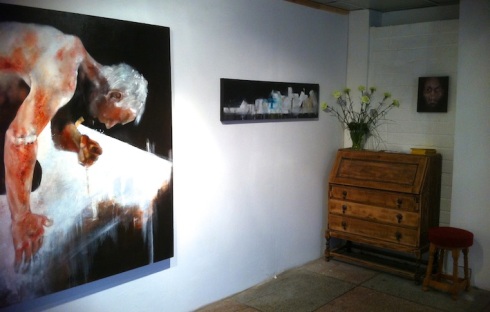

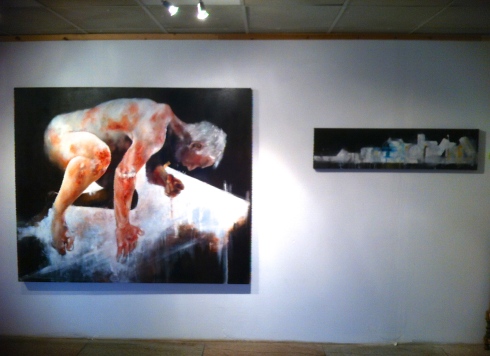



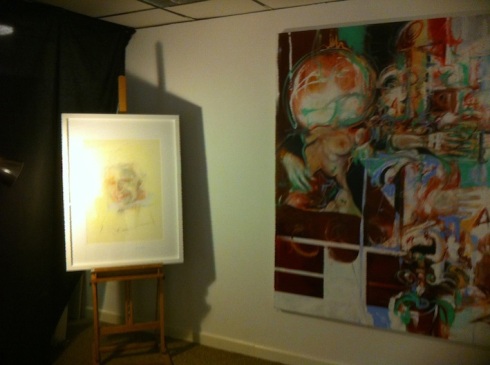
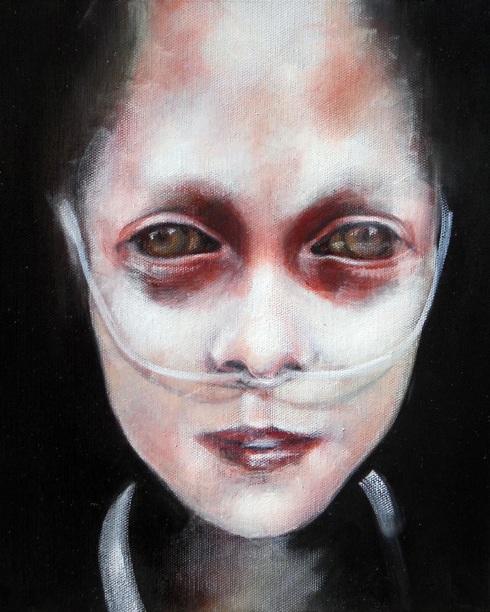









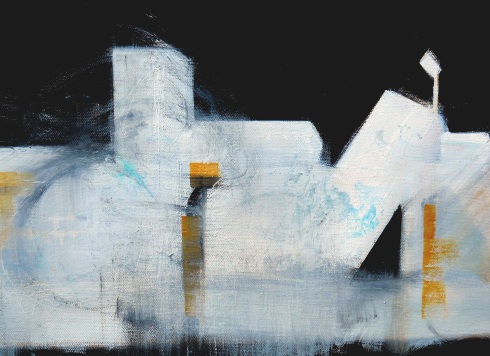
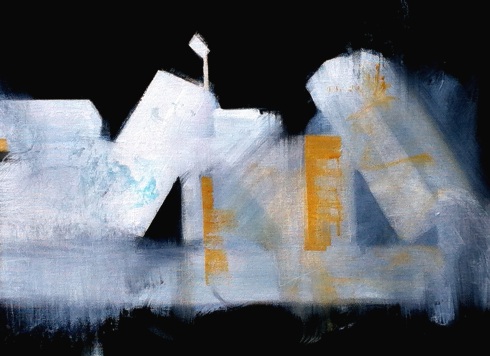





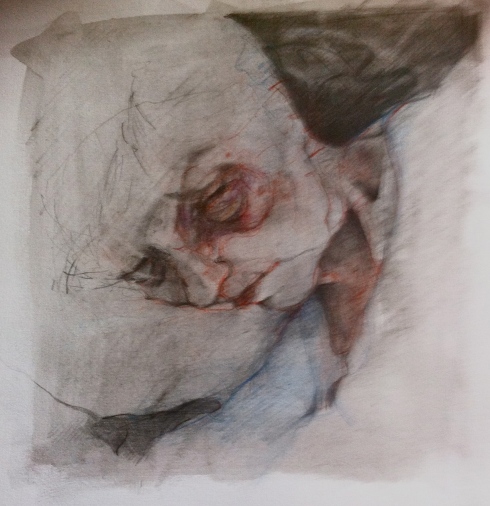
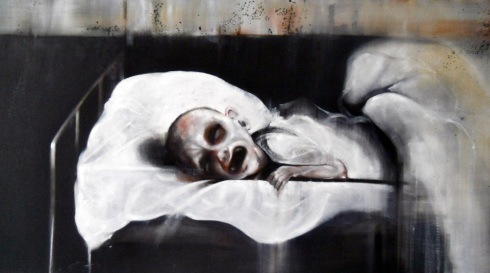
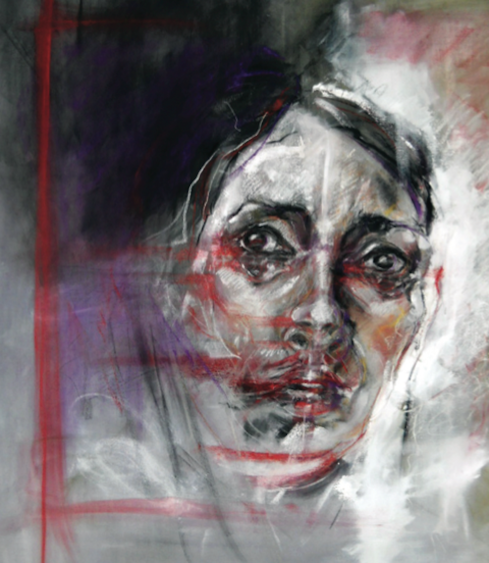

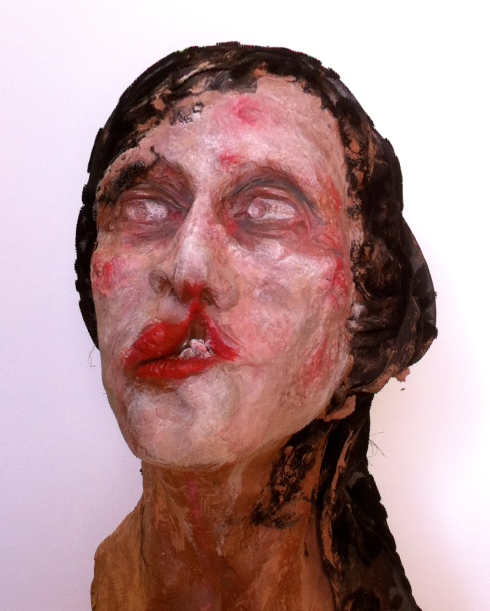
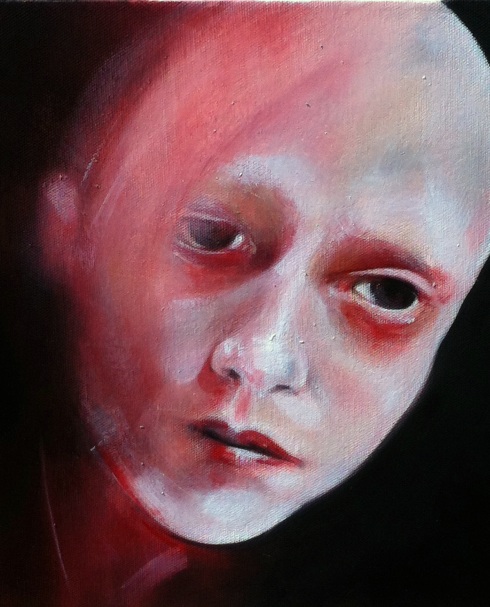

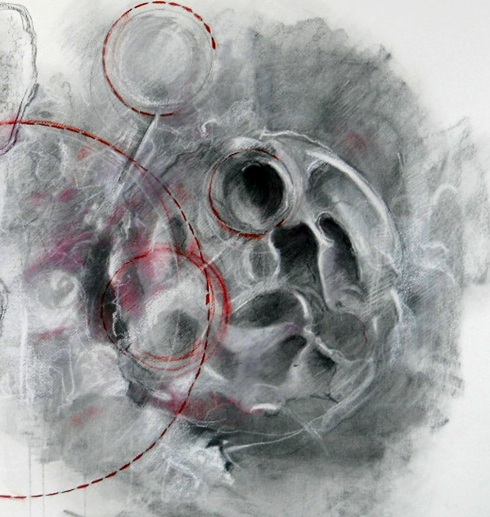

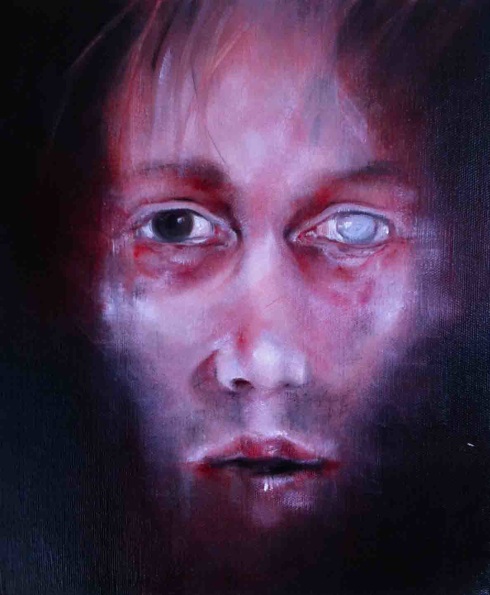





17 comments
Comments feed for this article
October 27, 2014 at 9:31 pm
Donna Vickers
Simply amazing Jac. Your work is stunning and in many ways so haunting. One can feel the illness. Congratulations!
October 27, 2014 at 10:35 pm
Jac Saorsa
Thanks Donna!!I wish you could have been here to see it ‘in the flesh’!
October 27, 2014 at 10:09 pm
Robert G MacDonald RIBA
This is the most amazing exhibition of drawings that I have every seen, better than Leonardo ? The quality of the line is wonderful; truly gentle and responsive to the subject. I will think of I, over and over again and share I with friends. The power of drawing to open our eyes is no better revealed than in I. Thank You Most Sincerely, Dr Robert G MacDonald RIBA.
October 27, 2014 at 10:34 pm
Jac Saorsa
I very much appreciate your comments about my work Dr MacDonald. If you have any questions about the project please don’t hesitate to contact me. With thanks and best wishes, Jac Saorsa
October 27, 2014 at 10:32 pm
Robert G MacDonald RIBA
Question ? What if I has a mental illness ? Can I draw I with Bi-polar ? Richard Dadd spent a life time drawing Fairies in Bedlam. How to draw the pain and dis figuration within the mind ? Thank You Most Sincerely Dr Robert G MacDonald RIBA.
October 28, 2014 at 1:16 pm
Jac Saorsa
Hello Robert (if I may), My perception of illness is such that there is not so great a distinction in terms of visualisation of the experience between mental and physical ‘dis-ease’. Even where the two kinds of condition can – and often must – be distinguished, as in medical understanding, there is surely still a tenuous connection at the emotional level where the ‘patient’ and the ‘person’ become one and the same. The Illness begins with I exhibition does focus primarily on physical illness, however, as one person who came to the opening eloquently wrote in the comments book, “It’s all in the eyes”.
Thanks again for your interest
Jac
October 28, 2014 at 3:13 pm
Robert MacDonald
Hello Jac, I actually have Bi-Polar Affective Disorder. If we met and you looked into my eyes I dont think you would know either way. However, when I have a major psychotic episode (of which I have had many) the drawings in my sketch books change dramatically from control to manic. I think its very important to talk about these Mental Health Matters so to bring it out of the shadows. Your drawings and exhibition are so important because they highlight and touch gently on the issues. Of course you will know that 1:4 of the population will experience some form of Mental distress during their life time. Today it was announced that only 2% of the NHS budget is spent on Mental Heath.
I agree, its all in the eyes but we must remember we all hide behind many different masks, some chosen and others imposed.
Best Wishes for all your work.
Dr Robert G MacDonald RIBA
Roscoe Citizenship Award for Life Long Services to Mental Health,
Presented by Lord David Alton.
October 28, 2014 at 3:27 pm
Jac Saorsa
Hello Robert, I imagined from your last post that you had some direct experience and I appreciate your being so frank. You are absolutely right about the masks we bear. I think however that not all of them are worn to hide behind, and I think also that engaging, in a ‘visceral’ way through art, with the experience of illness of whatever kind – trying to see through the mask – defines the profound transition from sympathy to empathy.
Thank you and I wish you all the very best
Jac
October 28, 2014 at 12:44 pm
Illness begins with “I” - Jac Saorsa (Exhibition, The Broadway Drawing School Gallery, Cardiff, until 2 Nov 2014) - Centre for Medical Humanities
[…] Illness begins with “I” Jac Saorsa The Broadway Drawing school Gallery, Cardiff 24th Oct. – 2nd Nov. 2014 […]
October 28, 2014 at 9:55 pm
Robert G MacDonald RIBA
Hello Again Jac, I find it important to be Frank about issues of Mental Health. Otherwise it will remain secret and stigmatised behind closed doors.We ought to lift the facade and Mental Hospitals need to be much more transparent, physically and metaphorically.
I think drawing can expose and highlight these issues. Drawing inside Mental Hospitals ( high security, medium and low security) can be therapeutic. Just like War artists we need resident artists, perhaps like you, living and drawing with patients in hospitals. What does I think ?
Dr Robert G MacDonald RIBA.
October 29, 2014 at 12:01 am
Jac Saorsa
Hi Robert, I agree absolutely and personally I would be very very interested in a residency in a mental hospital if such an opportunity were to present itself. Is this something we could discuss further I wonder? I think that what I am trying to do with art – that is, use art as a vehicle to help people understand and engage with the existential experience of illness – certainly lends itself to such a project and, as a trained person centred counsellor I am not unfamiliar with mental health issues and have experience of working with people in this area.
And Glasgow! yes – I lived up there for a number of years and the city owns a large part of my heart! I am looking forward to the three months I will spend there next spring working on the DWC project and no doubt I will visit Maggies while I am there.
All best wishes
Jac
October 28, 2014 at 10:19 pm
Robert G MacDonald RIBA
Hello Again Jac, “This Project is About” Women’s Cancer ! More amazing than I think I ? Do you know about Maggie Keswick Jencks living story that led to The Maggies Cancer Care Projects ? One of the first, of many is in the Grounds of Glasgow Hospital. Such a positive story of birth out of death; Maggie Lives on in her Caring Architecture ! By the way I used to work reconstructing the dying Glasgow in Govanhiil. Thanks.
Dr Robert G MacDonald RIBA.
March 2, 2015 at 7:13 pm
Stefan
Hi Jac my name is Stefan and I’m a film student and a cancer patient. I love your work so much as it is a true talent to be able to capture something so raw and real. it is very difficult for me to look at your work as it is so personal but i love how i feel about your work as i have never seen anyone who has every represented cancer as well as you have. i would just love to know, are you trying to address a specific issue about cancer in your artwork, if so what is the message behind your reasoning in creating these beautifuly vivid painting. Thank you for reading this and would love to hear from you.
Stefan
March 5, 2015 at 12:27 am
Jac Saorsa
Hi Stefan
Thanks very much for your message-I am happy ( and appreciative) that you found the work so meaningful. In making work about illness I am trying to evoke a sense of what it might mean to experience the particular kind of suffering that illness causes…this goes beyond the physical causes and symptoms of disease and embraces the emotional and psychosocial aspects of any condition out with normal ‘healthy’ parameters. I am trying to use art to communicate human experience in order that viewers of my work might feel and respond in a way that impacts on their awareness and understanding of conditions that may or may not otherwise be easier to disregard.
I hope this makes sense and I wish you well. Do not hesitate to get in touch again if you would like to continue a conversation
All best
Jac
December 5, 2018 at 9:57 pm
Caroline Beccari
Hello, Jac! I’m a brasilian journalist and I’m studying a master’s degree in Barcelona. I and a group of colleagues are setting up a project on scars and we would like to use their work that shows the mastectomy scar in our work, it’s for an online magazine cover. Our project is not for profit, only for academic purposes and for the dissemination and discussion of this important issue that is breast cancer. Can we use your image?
we will put the credits, of course and we will be very grateful.
December 6, 2018 at 12:35 am
Jac Saorsa
Hello Caroline
Of course you may use the piece but I would appreciate you crediting it. Please send me the link too for your magazine as I would be interested to see it. If you have a look at another of my sites – drawingcancer.wordpress.com – and scroll down the posts on the artists blog you will see I did a lot of work with breast cancer and it may interest you.
Good luck with your studies
Jac
December 11, 2018 at 6:49 pm
Caroline Beccari
Thank you so much, Jac! We will place your credit and we will send you the link when the magazine is online. Thank’s!